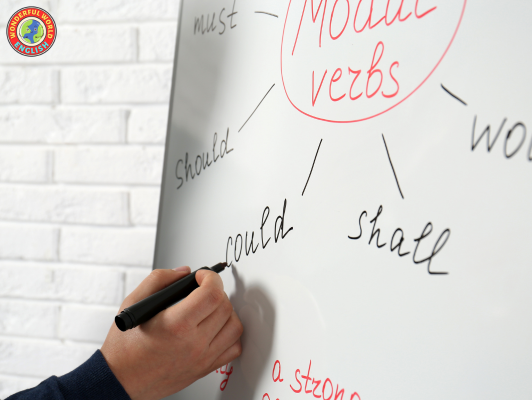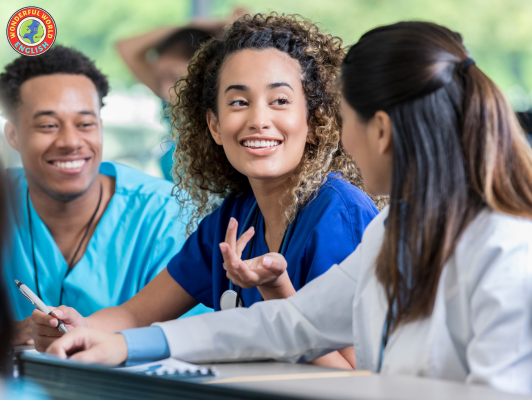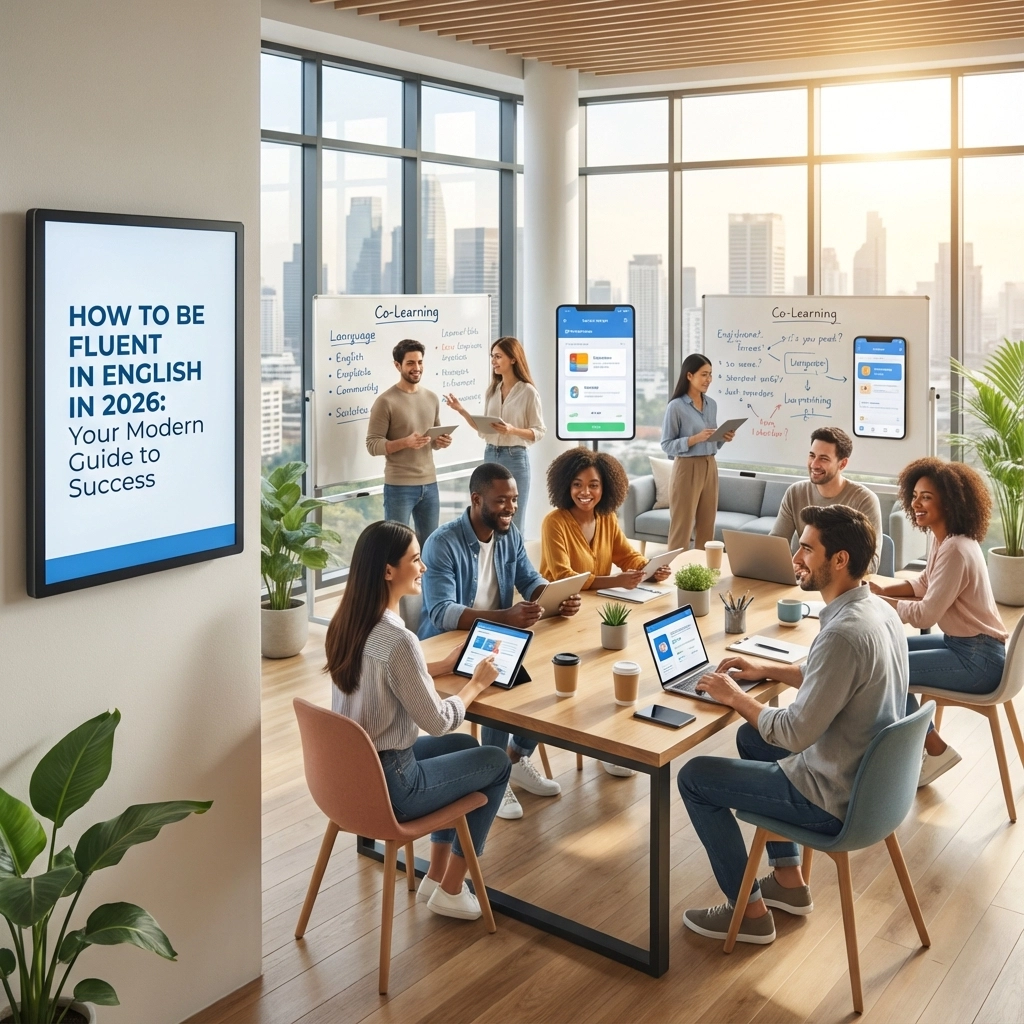Contents
Toggle
Meet David De’ Ath, founder, editor, and writer at Wonderful World English. With his extensive background as an English teacher, David provides valuable insights and practical tips on ESL for students and teachers alike.
Understanding the principles of easy grammar is essential for effective communication in English.
By breaking down complex rules into simpler concepts, learners of all ages can grasp essential grammar, enabling them to construct clear and correct sentences.
The beauty of easy grammar lies in its straightforward approach to teaching the building blocks of the language, from the parts of speech to sentence structure.
Easy grammar resources offer tools to master grammar with well-structured lessons and practical exercises.
This approach often includes simplifying grammar rules, focusing on key elements that most impact day-to-day writing and speaking.
Educational materials designed with this philosophy aim to make learning grammar less daunting, thus encouraging students to engage with the language more confidently and competently.
Key Takeaways
- Easy grammar simplifies complex rules for better understanding and application.
- Structured lessons and practical exercises are central to mastering grammar.
- A simplified approach to grammar supports clear and effective communication.

Foundational Concepts
The section focuses on the essential elements of English grammar, clarifying the building blocks necessary for constructing coherent sentences and effectively applying grammar rules.
Understanding Grammar
When one begins to study English grammar, it is crucial to acknowledge that it comprises a set of structured rules.
These rules guide the arrangement and relationship of words within sentences.
A proper understanding of grammar is fundamental to achieving clear communication.
Parts of Speech
In English, words are categorized into groups known as parts of speech, which are the core components of grammar.
There are eight traditional parts of speech:
- Nouns: Names a person, place, thing, or idea.
- Pronouns: Replaces a noun to avoid repetition.
- Verbs: Expresses action or state of being.
- Adjectives: Describe or modify nouns.
- Adverbs: Modify verbs, adjectives, or other adverbs.
- Prepositions: Show a relationship between a noun or a pronoun and another word in a sentence.
- Conjunctions: Connects words, phrases, or clauses.
- Interjections: Expresses a sudden feeling or emotion.
Basic Sentence Structure
Understanding basic sentence structure is critical to mastering English grammar rules.
A simple sentence structure in English follows a pattern of subject, verb, and, often, an object.
- Subject: The person or thing performing an action or being described.
- Verb: The action or state of being of the subject.
- Object (not always necessary): The entity that is affected by the action of the verb.
Sentences may also contain articles, such as “a,” “an,” and “the,” which precede nouns, and various phrases and clauses that further enrich the information provided by the sentence.

Grammar for Effective Communication
Effective communication in English hinges on the foundational elements of grammar, including an extensive vocabulary and comprehension of common expressions.
Both elements are crucial for various situations, such as work, business, and study.
Building Vocabulary
Expanding one’s vocabulary is vital for communicating effectively in English, especially in business or academic settings.
To master vocabulary for everyday and professional scenarios, learners can utilize methods like:
- Flashcards: An effective tool for memorization.
- Reading: Engaging with a variety of texts, from articles to novels, enhances word knowledge.
- Word Lists: Categorized by topics, these lists can streamline learning for specific areas like work or study.
- Pronunciation Practice: Ensuring that learning new words includes their proper pronunciation.
| Term | Definition | Example Sentence |
|---|---|---|
| Collaborate | To work jointly on an activity | They collaborate to improve the software design. |
| Implement | To put into action; execute | They implement new strategies to boost sales. |
| Efficiency | Achieving maximum productivity | She improves efficiency with excellent time management. |
Common Expressions
Understanding and using common expressions can greatly improve communication efficiency in daily conversations and professional interactions.
These phrases can simplify complex ideas and create rapport among speakers.
- For Work: “Keep me in the loop,” “Touch base,” or “Back to the drawing board.”
- For Study: “Hit the books,” “Learn the ropes,” or “Wrap your head around.”
- Everyday Situations: “Cutting corners,” “Piece of cake,” or “Break the ice.”
Ease of use in various contexts, such as business meetings or international conferences, comes with practice.
It’s recommended that learners listen to these expressions in context, through multimedia resources or conversation, to grasp their usage fully.

Verbal Constructions
Verbal constructions are integral to the structure of a sentence.
They involve forms of verbs to express various tenses and modalities. They add nuance to the time frame and mood of the actions described.
Using Tenses
Present Tense:
- Simple: She reads books.
- Perfect: She has read books.
- Continuous: She is reading a book.
Past Tense:
- Simple: She read a book yesterday.
- Continuous: She was reading a book when you called.
- Perfect: She had read the whole library by then.
Future Tense:
- Simple: She will read the book tomorrow.
- Perfect: She will have read the book by next week.
- Continuous: She will be reading when we arrive.
Perfect Tense is a construction that combines the verb “to have” with the past participle of the main verb, forming the present perfect, past perfect, or future perfect tense.
Modal Verbs and Auxiliary Verbs
Modal verbs are a type of auxiliary verb that express necessity or possibility.
They do not change form according to the subject and are used with the base form of the main verb:
- Must: She must finish her work (necessity).
- Might/Could: She might/could go to France next year (possibility).
“Used to” and “have to” express habitual action in the past and obligation, respectively:
- Used to: She used to play soccer.
- have to: She has to complete her assignment.
Auxiliary verbs “to be,” “to do,” and “to have” are used with main verbs to form different tenses, questions, negations, and short answers:
- To be: She is going to the movies.
- To do: Does she like ice cream?
- To have: She has finished her homework.

Complex Grammar Elements
Mastering complex grammar elements is crucial for articulating nuanced ideas and constructing precise and sophisticated sentences.
This section delves into complex grammatical structures and some of the more intricate aspects of verb usage.
Advanced Clause Structure
Complex sentences expand on simple and compound sentences by incorporating dependent (or subordinate) clauses along with an independent clause.
A dependent clause, which cannot stand alone as a complete sentence, provides additional information to the main clause.
It often starts with subordinating conjunctions like because, since, or although.
For instance, in the sentence, “He stayed at home because he felt ill,” “because he felt ill,” is the dependent clause that explains why “He stayed at home.”
Relative clauses are a specific type of dependent clause that describes or provides information about a noun.
They begin with relative pronouns such as who, whom, whose, which, or that.
Defining relative clauses is essential to the meaning of the sentence.
For example, in the sentence “The book that is on the table is mine,” the clause “that is on the table” defines which book is being talked about.
Verb Forms and Functions
In English, the verb forms and their functions are vital in denoting the time and nature of the action or state being described.
Verb tenses such as past, present, and future precisely locate an action in time.
For example, “she walks” is in the present tense, “she walked” is in the past tense, and “she will walk” is in the future tense.
Regarding verb forms, the infinitive form, to which “to” is usually prefixed as in “to read,” expresses the idea of the verb in a general sense without reference to time.
Meanwhile, gerunds, which are verbs ending in -ing that function as nouns—as in “Reading is enjoyable”—are useful for talking about activities.
Subject-verb agreement is another cornerstone of correct verb usage.
It ensures that singular subjects match with singular verbs and plural subjects with plural verbs, as in “She writes” versus “They write.”
By incorporating advanced clauses and understanding the diverse forms and functions of verbs, one can significantly enhance both the complexity and clarity of written and spoken English.

Grammar in Use
Understanding the practical applications of grammar helps individuals communicate effectively across various domains.
Mastery of grammar and vocabulary is essential for clarity and precision in both written and spoken forms.
Grammar in Writing
In writing, grammar serves as the framework that holds sentences together.
For students in grade 8 and grade 9, consistent study and lessons on subject-verb agreement and complex sentence structures ensure a solid foundation for advanced writing.
Educators can design games and interactive activities to make learning grammar more engaging for these grade levels.
Grammar in Speaking
While speaking, grammar is crucial for articulating thoughts coherently.
Effective communication skills are fostered through practice and the use of proper vocabulary.
In spoken language, adherence to grammar rules ensures the speaker conveys their message accurately and is understood by the audience.
Grammar in Professional Contexts
In business and professional contexts, grammar reflects an individual’s level of professionalism and attention to detail.
Mastery of grammar in work correspondence and presentations is paramount, as it can influence one’s credibility and effectiveness.
Organizations often provide specialized lessons or resources to assist employees with tailored business vocabulary and grammar usage.

Punctuation and Mechanics
In English writing, proper punctuation and mechanics are essential for clarity and comprehension.
They guide the reader through the complex structure of sentences, ensuring that the message is conveyed accurately.
Correct Punctuation Use
Punctuation marks serve as traffic signals for readers.
They indicate when to pause (commas, semicolons), stop (periods, question marks), or note something of importance (exclamation marks). For instance:
- Commas (,) separate items in a list or clauses or provide a pause for readability. Examples: apples, oranges, and bananas.
- Periods (.) mark the end of a definitive statement.
- Semicolons (;) connect closely related independent clauses. They’re also used in lists with complex items.
- Question marks (?) follow a direct question.
- Exclamation marks (!) express strong emotion.
Capitalization Rules
Capitalization in English indicates the beginning of a sentence or the importance of a particular word.
- Beginnings of sentences: The first word in a sentence is always capitalized. For example: The dog ran.
- Proper nouns: Names of people, places, and specific things. For instance: Elizabeth, Paris, or The Great Wall of China.
- Titles: When preceding names, titles are capitalized. Example: President Lincoln.
It is important for writers to understand and apply these rules consistently in order to communicate effectively.

Improving Grammar Skills
Improving grammar skills is essential for clear communication, whether it’s for professional writing, academic success, or everyday interactions.
Consistent practice through structured exercises and quizzes and applying these skills in real-life scenarios can enhance one’s proficiency in grammar.
Grammar Exercises and Quizzes
They can significantly enhance one’s understanding of English grammar.
Children and adults benefit from completing targeted exercises covering various aspects of grammar, from verb tenses to correct punctuation.
For self-evaluation, tests and quizzes provide immediate feedback, aiding in identifying and correcting mistakes.
Websites like IXL.com offer a wide range of English skills practice, including grammar, for K-12 students.
Verb Conjugations: For mastering verb tenses, one could start with simple present tense and progressively move to perfect tenses and subjunctive moods.
Punctuation: Practice using commas, semicolons, and quotation marks correctly with exercises that mimic real writing scenarios.
Applying Grammar to Real-Life Scenarios
Using grammar correctly in real-life situations strengthens one’s ability to communicate effectively in diverse settings—be it travel, work, or socializing with friends.
One could practice crafting indirect questions when seeking information in a polite manner or adjust their language when providing instructions.
The application of grammar skills can also facilitate learning a new language, as it improves the understanding of sentence structures and nuances.
For illustration, websites like ProWritingAid provide tips and tools to refine grammar skills through regular writing.
Travel: She might study various phrases and questions to ensure clarity and politeness when interacting with locals in a new country.
With Friends: Engaging in language games or helping each other with grammar exercises can make learning an enjoyable and shared experience.
Teaching Grammar
Effective grammar teaching involves combining comprehensive resources and dynamic methodologies to enhance the learning experience.
These elements contribute to making grammar instruction not only informative but also engaging for students of varying levels.
Grammar Resources for Teachers
Teachers seeking to improve their grammar instruction can utilize the Easy Grammar Ultimate Series which is known for its structured approach to grammar education.
This series, often available as a teacher edition, offers detailed guidance and structured lessons for educators.
Additionally, the Grammar Gameshow and The Grammar Gameshow formats make learning interactive, transforming the process into an exciting challenge for students.
Resources such as Daily Grams serve as supplemental materials, providing cumulative reviews and tests to reinforce concepts over time.
- Prepositional Approach: Introduces students to grammar using prepositions as a foundation.
- Cumulative Reviews/Tests: Ensure retention and understanding through ongoing assessment.
- Unit Reviews/Tests: Focus on specific sections for targeted learning.
- Grammar Series: A structured sequence of lessons that progresses in difficulty.
Grammar Learning Methodologies
Adopting effective grammar learning methodologies is as important as the resources used.
A key grammar point should be introduced with clear explanations followed by varied exercises, including grammar games to engage the learners.
The implementation of periodic cumulative reviews and cumulative tests ensures that knowledge is retained.
Unit reviews and unit tests allow learners to concentrate on particular areas, ensuring a solid understanding before moving on.
The use of a prepositional approach breaks down complex ideas into manageable pieces, simplifying the learning process for students.
- Interactive Learning: Encourages active participation through games and practical activities.
- Structured Learning: Methodically builds on previous knowledge to deepen understanding.
- Assessment-Driven Learning: Utilizes reviews and tests to measure progress and reinforce learning.
The combination of diverse educational resources and methodical teaching strategies promises a robust and thorough understanding of grammar for students.
Related: How to Teach Grammar to ESL Students – Teacher’s Guide

Grammar for Specialized Purposes
Recognizing the distinct linguistic needs of various professional and academic settings, grammar for specialized purposes equips individuals with the targeted communicative proficiency required for success.
This domain-specific approach encompasses the foundational grammar rules and contextually appropriate language use, whether in an academic environment or the business world.
Academic Grammar
Academic grammar entails the precision and formality needed for scholarly writing and communication.
It involves a comprehensive understanding of complex sentence structures, the passive voice, and advanced vocabulary.
Students often encounter this rigorous grammatical framework in an English class, where the focus is on developing skills for clear and cogent academic writing.
Resources like English for Academic Purposes (EAP/ESL): Grammar Help can provide learners with valuable tools to navigate the intricacies of academic English, preparing them for a range of study-related tasks.
Business English Grammar
Grammar in a business context, or Business English Grammar, is tailored to suit the dynamic needs of the workplace.
Professionals must master grammatical norms that facilitate clear and concise communication and project a certain level of formality and politeness appropriate for business settings.
Key components include accuracy in tenses to accurately reflect project timelines, correct use of modals for making offers and requests and understanding the subtleties of formal versus informal language.
Resources such as Grammar Lessons for Students – Easy Grammar, Daily Grams can be instrumental for individuals looking to refine their business English proficiency for better performance at work.
Grammar Games and Interactive Learning
Integrating grammar games into educational curriculums provides a dynamic way for learners to enhance their understanding of language mechanics.
These interactive tools can turn challenging grammar lessons into engaging experiences, making it easier for students to grasp complex concepts.
Engaging with Grammar Through Games
Games serve as an excellent method for students to practice and solidify their grammar knowledge.
With the introduction of exciting formats such as a grammar gameshow, the learning process becomes a thrilling challenge that both educates and entertains.
For instance, kids can participate in a “Grammar Gameshow” where they compete by answering questions related to different grammar points.
These lessons often transform traditionally dry subjects into compelling competitions or adventures.
When it comes to phrasal verbs, which can be particularly tricky for learners, interactive exercises embedded within games offer a memorable context for understanding and retention.
A well-designed game can illustrate the usage of phrasal verbs in different scenarios, making it more likely for students to apply them correctly in speech and writing.
Grammar games have evolved to cover a vast array of topics, from nouns and verbs to figurative language, and cater to a variety of age groups.
For younger audiences, matching games where they sort nouns and verbs or capitalize proper nouns offer a hands-on approach to learning.
On the other hand, older students might engage with more complex activities, like constructing multi-syllable words or deciphering idioms through interactive storytelling.
Online platforms, such as Education.com, provide an array of grammar games for different age groups and learning levels, ensuring that every student can find a game to match their interests and educational needs.
These resources make it convenient for teachers to incorporate them into their lesson plans and for students to access them both in the classroom and at home.
Teachers have discovered that these grammar-focused games can significantly boost students’ motivation and participation, which often leads to better learning outcomes.
By framing grammar as a game, learners are encouraged to take more risks and experiment with the language, which can lead to a deeper understanding of grammar rules and greater fluency.
Related: Best Apps for Learning English Grammar – Top 10

Progressive Learning and Review
Progressive learning in grammar involves a structured approach where lessons build on each other, and frequent review ensures the learner retains the knowledge over time.
This section outlines how graded grammar lessons and regular review and reinforcement are keys to mastering English grammar.
Graded Grammar Lessons
Graded grammar lessons should begin with easy grammar concepts before progressing to more challenging material.
For instance, learners might start with “Present Simple vs. Present Progressive” to grasp the fundamentals of verb tenses before moving to medium grammar reference topics such as perfect tenses.
Each unit typically concludes with a unit test to assess comprehension.
- Easy Grammar: Structured around basic syntax.
- Medium Grammar Reference 1: Introduces complex sentences.
- Medium Grammar Reference 2: Explores nuances in tense usage.
- Hard Grammar Reference: Delves into advanced structures like subjunctive moods.
Review and Reinforcement
Regular reviews are critical to cement grammar concepts.
Unit reviews should recap the key points of each lesson, while periodic cumulative reviews and tests can help solidify previously learned material and gauge overall progress.
- Unit Reviews: Brief sessions following each lesson to revisit main points.
- Cumulative Reviews: Comprehensive overviews covering multiple units.
- Cumulative Tests: Structured exams evaluating long-term retention.
By using a combination of specific English grammar lessons, the learner can systematically enhance their knowledge and confidence in using the language effectively.
Common Challenges in Grammar
Grammar serves as the foundation of clear communication, yet many learners struggle with consistent rules and exceptions.
This section addresses these challenges and discusses tools and strategies to overcome them.
Addressing Frequent Errors
Common Mistakes:
Learners often encounter difficulties with subject-verb agreement, where the verb must agree in number with its subject.
For example, “She writes,” not “She write.” Mistakes in using articles can alter meaning, such as confusing “a” and “the” (indefinite vs. definite articles).
Prepositions can be perplexing; the difference between “in time” and “on time” is subtle but impactful.
Punctuation, especially commas and semicolons, often trips up students; for instance, they must discern when to use a comma before “which” in relative clauses.
Adjectives and Adverbs:
Learners might mix up adjectives and adverbs, using “quick” instead of “quickly”.
The placement of adjectives before nouns is usually straightforward, but adverb placement can be more complex.
Conditionals:
The first conditional deals with real and possible situations — “If it rains, I will take an umbrella.”
It contrasts with the second conditional, which is for unrealistic or hypothetical situations — “If I were a bird, I would fly.”
Comparatives and Superlatives:
These forms often confuse learners when they forget to add “-er” or “-est” to short adjectives or when to precede longer adjectives with “more” or “most”.
Other Challenges:
Learners must remember to use “already” for actions that have happened at an unspecified time before now and “enough” to indicate sufficient quantity.
Modal verbs like “may” imply possibility and are different from the more certain “will”.
Lastly, forming question structures poses a challenge, particularly in changing the word order and using auxiliary verbs correctly.

Advanced Grammar Topics
Advanced grammar plays a critical role in understanding the complexities of the English language.
It includes an array of intricate structures that convey nuanced meaning, making the expression detailed and precise.
Exploring Nuanced Grammar Points
Relative Clauses: These are used to provide extra information about a noun, often essential for understanding the context.
They come in two forms: defining relative clauses, which specify the particular noun to which we’re referring, and non-defining relative clauses, which add extra information about a noun that is already clearly identified.
- Defining Example: ‘The musician who won the award is performing tonight.’
- Non-Defining Example: ‘Vienna, which is known for its classical music scene, is where the musician lives.’
Modal Verbs: Utilized to express various degrees of necessity, possibility, permission, or obligation.
Modal verbs are pivotal in articulating diplomatic language, offers, ability, and polite requests, with forms including ‘can,’ ‘could,’ ‘may,’ ‘might,’ ‘must,’ ‘shall,’ ‘should,’ ‘will,’ and ‘would’.
- Possibility: ‘She might come to the party if she finishes work early.’
- Obligation: ‘You must turn in your report by Friday.’
Adjectives: These words modify nouns or pronouns, adding description and specificity.
They can classify nouns, as in ‘financial assistance,’ or describe qualities, like ‘sparkling water’.
Indirect Questions: These are polite ways to seek information.
They are formed by embedding a question within a declarative statement or another question.
They usually begin with phrases like ‘I wonder’ or ‘Could you tell me?’
- Example: ‘Could you tell me where the nearest station is?’
Question Tags: These are short questions added at the end of sentences, usually to confirm information or ask for agreement.
They often mimic the auxiliary or modal verb of the main sentence.
- Example: ‘We’re late, aren’t we?‘
Action Verbs: Describe specific actions that are fundamental to creating dynamic, engaging sentences.
These verbs can describe physical or mental actions.
- Physical Action: ‘The athlete jumps over the hurdle.’
- Mental Action: ‘The student thinks about the problem.’
Passive Voice: In the passive voice, the focus is on the action itself, not who or what is performing the action.
This can be used to emphasize the action or to keep the subject anonymous.
- Active: ‘The chef cooked a delicious meal.’
- Passive: ‘A delicious meal was cooked.’
Reported Speech: Also called indirect speech, it is used to convey what someone else has said without quoting them directly.
It often requires changes in tense, pronouns, and modal verbs to fit the new speaker’s perspective.
- Direct Speech: ‘I am tired,’ he said.
- Reported Speech: ‘He said (that) he was tired.’
Through mastering these complex grammar areas, speakers can enhance their English writing and speaking, expressing ideas with subtlety and sophistication.

Conclusion
Mastering easy grammar principles is essential for effective English communication.
This approach demystifies the complexities of grammar, making it accessible to learners by focusing on the language’s essential building blocks, such as parts of speech and sentence structure.
Easy grammar emphasizes structured lessons and practical exercises.
It targets key elements crucial for everyday communication and enhances clarity and efficacy in writing and speaking.
The guide outlines the importance of expanding vocabulary and understanding common expressions across different contexts, including work, study, and daily interactions.
It also covers advanced grammar topics like complex sentence structures and nuanced verb forms, offering a comprehensive guide to expressing detailed and precise meanings.
Easy grammar offers a straightforward path to understanding English grammar’s intricacies, equipping learners with the tools needed for confident and clear communication.
It caters to a range of needs, from academic and professional to personal growth, underscoring the importance of grammar mastery for effective communication.
We hope you find value in this information, you can contact us if you are in need of any assistance.
Have a wonderful day!
Image Attribution: All images licensed via canva.com





